I'm a bit late -- 5 years, but who's counting?
For a 2nd order transfer function, there's really only two parameters that affect it: the damping \$\zeta\$ (or \$Q\$), which affects the shape, and \$\omega_{_0}\$, which affects its position on the frequency axis but does not affect its shape. One of them really doesn't matter until you need to implement something, \$\omega_{0}\$. So, really, everything you need to know about a named filter type is about its shape.
You can compute the shape of a filter by just looking at the homogenous response part, which can easily be derived from the constants in the denominator. (As it turns out, any constants in the numerator don't matter as those are just part of the non-homogeneous driving part and can be, with some algebra work, made to go away and turned instead into gain factors.)
For any 2nd order homogeneous expression of the form \$a_2 s^2+a_1 s+a_0\$ (found in the denominator) you can easily determine if a 2nd order filter over here is of the same shape as a 2nd order filter over there. All you need to do is to compute: \$\zeta=\frac12\frac{a_1}{\sqrt{a_2\,\cdot\, a_0}}\$.
That's it. If the order of the denominator is the same and they both have the same \$\zeta\$ then the filters are shaped the same.
That does not mean they are set for the same frequency!! That's a different thing. So it doesn't mean the filters are identical by just comparing the one number. If you want to know that, then you must also compute \$\omega_{_0}=\sqrt{\frac{a_0}{a_2}}\$ for both and that must also match up.
But if it's just a matter of shape, and calling something a Bessel or a Butterworth is purely a question of shape when talking about 2nd order, then you only need to compare their values of \$\zeta\$.
So let's consider your question in this light:
How come that the transfer function in the ti design guide is not a bessel polynomial.
It's simply because \$\omega_{_0}\$ is different between the two. That's all.
Let's do the computations.
In the first case you have a homogeneous response of \$s^2+3 s+3\$, so that \$a_2=1\$, \$a_1=3\$, and \$a_0=3\$. From this we compute:
$$\begin{align*}
\zeta&=&\frac12\frac{3}{\sqrt{1\,\cdot\, 3}}&=\frac12\sqrt{3}&&\approx 0.8661
\\\\
\omega_{_0}&=&\sqrt{\frac{3}{1}}&=\sqrt{3}&&\approx 1.732\:\frac{\text{rad}}{\text{s}}
\end{align*}$$
In the TI case you have a homogeneous response of \$0.618 s^2+1.3617 s+1\$, so that \$a_2=0.618\$, \$a_1=1.3617\$, and \$a_0=1\$. From this we compute:
$$\begin{align*}
\zeta&=&\frac12\frac{1.3617}{\sqrt{0.618\,\cdot\, 1}}&&&\approx 0.8661
\\\\
\omega_{_0}&=&\sqrt{\frac{1}{0.618}}&&&\approx 1.2721\:\frac{\text{rad}}{\text{s}}
\end{align*}$$
So you can see that the \$\zeta\$ values are as close as can be. The shapes are therefore the same. But they just have a different value for \$\omega_{_0}\$. So they both have the same shape (Bessel) but are located at a different place on the frequency axis.
Should the pole location of a 2nd order Bessel filter be the same for any filter with a certain cutoff frequency?
Yes. Or put another way, if you just arbitrarily set \$\omega_{_0}=1\$ then the 2nd order Bessel filter pole locations are always in the exact same place: \$\left(-\zeta,\pm\sqrt{1-\zeta^2}\right)\$. The hypotenuse is then just 1, which is of course because \$\omega_{_0}=1\$.
Can a second order bessel low pass have a different Q factor than
0.5773?
No. The exact and approximate value for a 2nd order Bessel filter is always \$Q=\frac13\sqrt{3}\approx 0.57735\$. Anything else and it's no longer a 2nd order Bessel.
(Since \$\zeta=\frac1{2 Q}\$, then in the 2nd order Bessel case it follows that \$\zeta=\frac12\sqrt{3}\$.)

